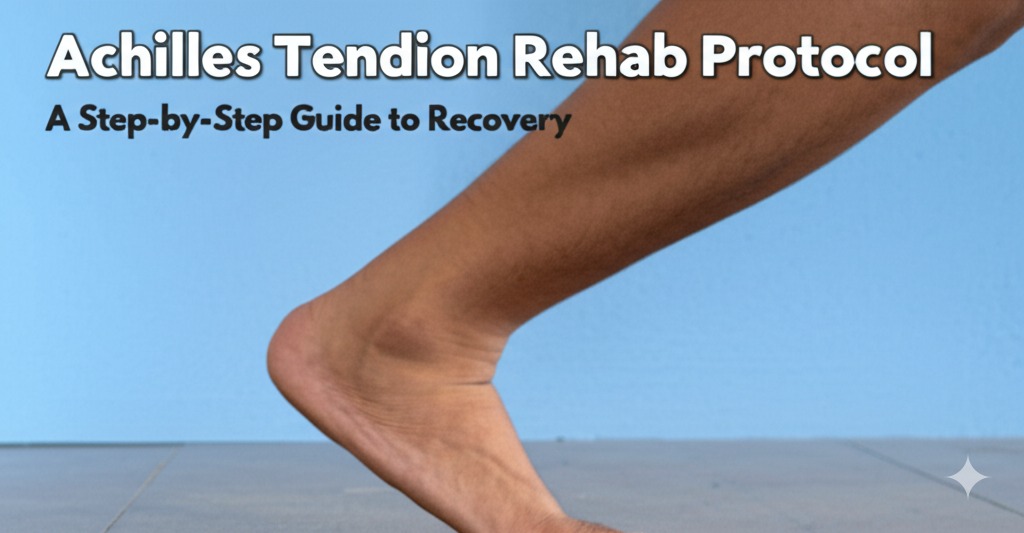The Achilles tendon is the strongest and largest tendon in the body, connecting the calf muscles to the heel bone. When injured, it can significantly impair mobility and quality of life. Whether you’re an athlete or someone who suffered an injury during daily activities, a well-structured Achilles tendon rehab protocol is essential for a full recovery. In this guide, we’ll walk you through each phase of rehabilitation, offering expert-backed tips and strategies to ensure a safe and effective healing process.
Understanding Achilles Tendon Injuries
Common Causes
Achilles tendon injuries often result from:
- Sudden increases in physical activity
- Improper footwear
- Tight or weak calf muscles
- Overuse or repetitive stress
These injuries can range from mild strains to complete tendon ruptures, and the rehabilitation protocol may vary depending on the severity.
Symptoms to Watch For
- Pain and stiffness along the back of the ankle
- Swelling or tenderness
- Difficulty pushing off the foot
- A popping sound at the time of injury (in case of rupture)
Early diagnosis and treatment are crucial to prevent long-term damage.
Phases of Achilles Tendon Rehabilitation
Phase 1: Acute Phase (0-2 Weeks Post-Injury)
Goals: Reduce pain, swelling, and protect the tendon
- Rest and immobilization using a boot or brace
- Ice therapy 15-20 minutes every 2-3 hours
- Elevate the foot to decrease swelling
- Use crutches to avoid weight-bearing
- Begin gentle range-of-motion (ROM) exercises as directed by a physical therapist
Phase 2: Early Mobilization (2-6 Weeks)
Goals: Improve mobility and begin weight-bearing activities
- Gradual weaning off crutches
- Continue ROM exercises
- Gentle stretching of calf muscles
- Begin light isometric strengthening exercises
- Regular follow-ups with a healthcare provider
Phase 3: Strengthening Phase (6-12 Weeks)
Goals: Rebuild strength and restore function
- Progress to resistance exercises (e.g., therabands, calf raises)
- Balance and proprioception training
- Begin low-impact cardiovascular activities like cycling or swimming
Phase 4: Advanced Strengthening and Functional Training (3-6 Months)
Goals: Regain full strength and return to pre-injury activities
- Increase intensity and volume of exercises
- Introduce sport-specific drills if applicable
- Plyometric training for athletes
- Functional movement assessments
Phase 5: Return to Activity (6 Months and Beyond)
Goals: Safe return to sports or daily activities
- Full weight-bearing without pain
- Clearance from physician or physical therapist
- Ongoing maintenance exercises to prevent re-injury
Key Considerations for Successful Recovery
Listen to Your Body
Progression through rehab should be based on pain levels and function, not just timelines.
Work with a Professional
A licensed physical therapist can customize your program, monitor your progress, and help avoid setbacks.
Stay Consistent
Consistency in performing rehab exercises is vital for optimal results.
Nutrition and Hydration
Proper nutrition, including protein and vitamin C, supports tendon healing. Stay well-hydrated.
Preventing Future Injuries
- Always warm up before physical activity
- Incorporate stretching and strengthening into your routine
- Wear appropriate footwear with good heel support
- Gradually increase training intensity and duration
Final Thoughts
Rehabbing an Achilles tendon injury takes time, patience, and commitment. By following a structured Achilles tendon rehab protocol and working closely with healthcare professionals, you can significantly improve your chances of a full and safe recovery.
Don’t rush the process—listen to your body and celebrate each milestone along the way.
If you or someone you know is recovering from an Achilles injury, consult with a qualified physical therapist to design a personalized plan. Your recovery journey starts now.

Kallie Snyder is an author at Stonegate Health Rehab, providing valuable insights, recovery guidance, and rehab resources to help individuals achieve better health and well-being.
